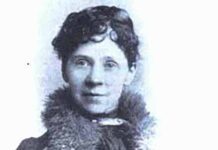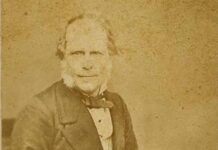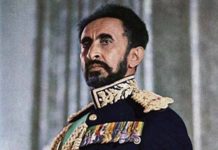In the Battle of Britain during the summer of 1940, the exploits of the Royal Air Force against the Nazi German Luftwaffe soon assumed heroic proportions.
On August 20 when the Battle was still at its height, Winston paid tribute in the House of Commons to the outnumbered but intrepid pilots of the RAF.
Winston’s Salutes “The Few”
“The gratitude of every home in our island, in our empire and indeed throughout the world …. goes out to the British airmen who (have been) undaunted by odds, unwearied in their constant challenge of mortal danger, and (in) turning the tide of world war by their prowess and by their devotion. Never in the field of human conflict was so much owed by so many to so few.”
From August 24, the Luftwaffe concentrated its attacks on airfields, aircraft factories and communications and control centers, causing severe damage and putting many sector control stations out of action.
By September 5, the RAF had lost 450 aircraft, with 231 pilots killed or injured. It looked as if the British were on the brink of defeat. But total victory still eluded the Luftwaffe, who had to win the battle and so command the air if the Nazi invasion of Britain were to go forward. In particular, though critically damaged, the RAF were not ready to give up the fight.
“We Can Take it!”
From the very start of the battle, the Nazi Führer Adolf Hitler and Hermann Goering, head of the Luftwaffe had been seeking a single target whose destruction would achieve their ends quickly and decisively.
Their first choice, the Royal Air Force (RAF) , had proved a great deal tougher than expected, so they switched the focus of their attacks. On September 7, 1940, they unleashed the fury of the Luftwaffe on London in the first of a long series of assaults which became known as the Blitz.
This, though, was a tactical mistake for it gave the RAF time to recover their shattered airfields: this meant that British chances of survival improved. The Blitz began with daylight raids, but the Luftwaffe lost too many bombers by day and switched to night attacks.
During one attack, an air raid shelter took a direct hit, killing forty people inside. Winston came to survey the ruins and found himself surrounded by a crowd of survivors and bereaved relatives expressing their defiance with recently coined slogans. “We can take it!” they cried “Give it em back!” Churchill, an intensely emotional man, was so overwhelmed that he wept.
Number Ten Annexe
As the Blitz intensified, 10 Downing Street, the Prime Minister’s official London residence, became vulnerable. On September 16, Winston, his wife Clementine and the Downing Street staff moved into a specially fortified set of rooms in the Board of Trade Building opposition St. James’s Park.
The rooms, which became known as the Number 10 Annexe, were strengthened inside by steel girders and outside by steel shutters. The shutters were closed as soon as an air raid siren sounded in preparation for an impending attack. The Annexe remained Winston’s headquarters for the rest of the war.
In the underground basement, the Central War Rooms, later known as the Cabinet War rooms, were built for meetings of Winston’s War cabinet and the Defense Committee.
Winston Watches Air Raids
Winston, however, refused to remain inside his fortified bunker. He often spent nights watching from the roof of government buildings in London’s Whitehall as searchlights scoured the skies overhead, anti-aircraft guns thundered and bombs descending roared and whistled, then exploded on impact.
A year earlier, Winston had believed that mercy should soften the brutalities of war. “God forbid we should ever part company with that” he had commented. But the sight of London ablaze all around him hardened his heart.
As his secretary John Colville noted in his diary on September 19, 1940, “the Prime Minister was becoming less and less benevolent towards the Germans… and (now) talks about castrating the lot!”
By the time the Blitz ended in May 1941, the Luftwaffe had extended their bombing beyond London to Coventry, Liverpool and other industrial cities and ports. In just under nine months,more than 43,000 civilians were killed, another 51,000 seriously injured and large areas of the bombed cities lay in ruins.
On September 15, 1940, only eight days after the bombing of London began, the RAF initiated the end of the Battle of Britain. That day, some five hundred Luftwaffe aircraft crossed the English coast but only around seventy managed to reach their targets in central London.
The End of the Battle
According to RAF statistics, 174 enemy aircraft were destroyed on September 15, and another nine were brought down by anti-aircraft fire. The RAF lost twenty-three aircraft and thirteen pilots.
The same day, along the coast of northern France, RAF bombers joined forces with Royal Navy ships to destroy some two hundred barges which had been preparing for the invasion of Britain. After that, the Luftwaffe’s massed daylight raids gradually tapered off. The last of them took place on September 30.
Despite their numerical superiority and Goering’s boasts about his pilots’ prowess, the Germans had failed to take control of the air and without that, no landing on the south coast of Britain could succeed.
Maintaining Watchfulness
On September 17, Adolf Hitler suspended Operation Sealion “indefinitely” and there was no further attempt to launch it. Against tremendous odds, Britain was out of peril, although Winston warned against a lapse in vigilance.
“Do not let us be lured into supposing that the danger is past” he told the House of Commons. “On the contrary, unwearying vigilance and the swift and steady strengthening of our force by land, sea and air … must be maintained at all costs…”
“Because we feel easier in ourselves and see our way more clearly through our difficulties and dangers …, because foreign countries, friends or foes, recognize the giant, enduring, resilient strength of Britain and the British Empire, do not let us dull for one moment our sense of the awful hazard in which we stand.”
Sources:
- Goss, Chris: The Luftwaffe’s Blitz: The Inside Story November 1940-May 1941 (Manchester, UK: Crecy Publishing, 2010) ISBN-10: 0859791483/ISBN-13: 978-0859791489
- Parke, Matthew: The Battle of Britain, July – October 1940 (London, UK: Headling Publishing, 2001) ISBN-10: 0747234523/ISBN-13: 978-0747234524








